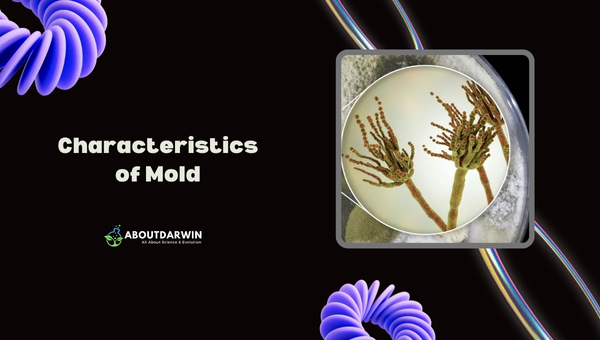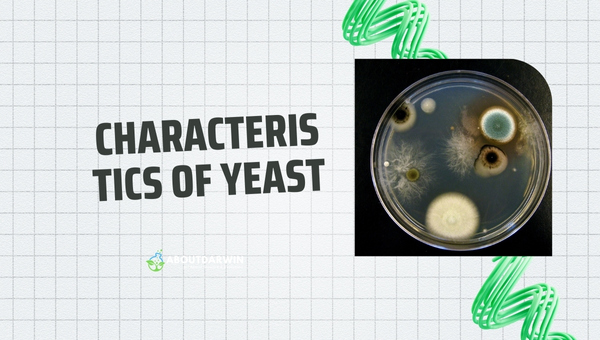Physical Address
304 North Cardinal St.
Dorchester Center, MA 02124
Yeast and mold, two microscopic organisms that often spark confusion, represent fascinating biological entities with distinct characteristics and profound implications for human life.
These remarkable microorganisms share surprising similarities yet diverge dramatically in their ecological roles and behaviors.
Their intricate world reveals complex interactions that silently shape environments around us, from culinary processes to potential health challenges, inviting us to explore their remarkable microscopic universe with keen scientific intrigue.
Contents
Yeast vs mold are both fascinating fungi with unique characteristics that set them apart, despite belonging to the same kingdom.
These microorganisms play crucial roles in various biological and industrial processes, differentiating themselves through cellular structure, reproduction, and environmental adaptations.
While they share some fundamental similarities as eukaryotic organisms, their distinct properties make them fascinating subjects of scientific study.
| Characteristic | Yeast | Mold |
|---|---|---|
| Cellular Structure | Unicellular | Multicellular |
| Shape | Oval or spherical | Filamentous |
| Reproduction | Primarily by budding | Sexual and asexual spores |
| Color | White or colorless | Varied (purple, green, orange, brown) |
| Typical Habitat | Fruits, animal skin, surfaces | Damp, dark, humid environments |
| Typical Examples | Saccharomyces cerevisiae, Candida | Penicillium, Aspergillus |
| Spore Production | Generally do not produce spores | Produce airborne spores |
| Growth Conditions | Optimum temperature 15-30°C | Optimum temperature 10-35°C |
Key Distinguishing Features:
Also Read: Distinguishing between Anthrax Bacilli and Anthracoid Bacilli
Molds are fascinating multicellular fungi that play a crucial role in our ecosystem, serving as nature’s decomposers while also presenting unique biological characteristics.
These microorganisms are found ubiquitously in various environments, growing on organic materials and forming intricate networks of filamentous structures.
Their ability to break down complex organic compounds makes them essential in nutrient recycling processes, though they can also cause challenges in food preservation and human health.
Molds exhibit remarkable adaptability and resilience, capable of growing on numerous organic surfaces. Their unique characteristics include rapid reproduction through spore generation, ability to survive in extreme conditions, and potential to produce mycotoxins.

These fungi can quickly colonize environments with sufficient moisture and organic material.
Mold’s intricate structural design enables its remarkable survival and proliferation capabilities. Composed of complex, interconnected networks of filamentous cells called hyphae, mold structures facilitate efficient nutrient absorption, reproduction, and environmental adaptation.
These microscopic organisms demonstrate sophisticated biological engineering through their multi-layered, specialized cellular architecture.
| Structure | Description | Characteristics |
|---|---|---|
| Hyphae | Tubular, branching filaments | 2-10 µm in diameter, divided by crosswalls (septa) |
| Mycelium | Total mass of hyphae | Network of interconnected filaments |
| Vegetative Mycelium | Nutrient absorption region | Anchors the mold and absorbs nutrients |
| Aerial Mycelium | Reproductive region | Produces asexual reproductive spores |
| Cell Wall | Structural component | Composed of chitin, sometimes cellulose |
| Spores | Reproductive units | Can be asexual or sexual, often spherical or ovoid |
Yeasts are unicellular fungi that are eukaryotic in nature. They are unique among fungi for being single-celled organisms, typically measuring 3-4 µm in diameter, though some can reach up to 40 µm.
Unlike most fungi that form long thread-like hyphae, yeasts exist as individual cells and can reproduce through various methods.
Yeast organisms exhibit extraordinary adaptability and resilience across diverse environmental conditions. Their unique cellular structure enables rapid reproduction and metabolic processes, allowing them to thrive in various ecosystems.

From transforming bread dough to producing alcoholic beverages, yeasts demonstrate remarkable biochemical capabilities that have been harnessed by humans for thousands of years.
Yeast cells possess a complex and intricate structural organization that enables their remarkable survival and functional capabilities.
Their sophisticated cellular architecture comprises multiple interconnected components, each performing specialized functions critical for metabolism, reproduction, and adaptation.
The precise arrangement of cellular elements allows yeasts to efficiently process nutrients and respond dynamically to environmental changes.
| Cellular Component | Description |
|---|---|
| Cell Wall | Thin, composed of chitin and other chemicals. |
| Cytoplasmic Membrane | Located beneath the cell wall, contains fibrils. |
| Nucleus | Centrally located, surrounded by a double membrane. |
| Cytoplasm | Contains organelles like mitochondria, endoplasmic reticulum. |
| Vacuole | Large, size varies based on cellular activity. |
| Cellular Reserves | Includes volutin, glycogen, and oil globules. |
Yeasts are remarkable single-celled microorganisms with diverse and fascinating properties that make them unique in the microbial world. These eukaryotic fungi demonstrate extraordinary adaptability and play crucial roles in various biological and industrial processes.
| Category | Specific Properties | Detailed Description |
|---|---|---|
| Metabolic Properties | – Energy Source – Metabolism Type – Preferred pH | – Organic compounds – Facultative anaerobes – Neutral to slightly acidic (pH 4.5-6.5) |
| Reproduction Methods | – Asexual – Sexual | – Budding – Sporulation under nutrient limitation |
| Habitat | Natural Locations | Plant surfaces, soil, fruits, animal skin |
| Nutritional Requirements | – Carbon Sources – Nitrogen Sources | – Sugars (glucose, fructose, sucrose) – Ammonium salts, amino acids |
| Temperature Tolerance | – Optimal Growth – Survival Range | – 25-30°C – 0-40°C |
| Unique Capabilities | – Enzymatic Processes – Transformation – Nutritional Value | – Complex molecule breakdown – Pseudohyphae formation – B-vitamins, amino acids |
Also Read: Detecting Neisseria Gonorrhoeae: Guide to Biochemical Tests
Molds and yeasts are fascinating fungi with unique reproductive strategies that showcase the diversity of microbial life. While both belong to the kingdom Fungi, their reproductive mechanisms reveal intriguing differences in cellular structure and propagation methods.
These distinctions provides insights into how these microorganisms survive and spread in various environments.
Fungi represent a diverse group of organisms with complex reproductive strategies. Their ability to adapt and reproduce efficiently makes them crucial in ecological systems and biological processes.
The nuanced differences between mold and yeast reproduction helps researchers comprehend their survival mechanisms, environmental interactions, and potential applications in fields like biotechnology, medicine, and agriculture.
Mold Reproduction – Molds reproduce primarily through asexual spore formation. They generate spores through the following key mechanisms:
Yeast Reproduction – Yeasts predominantly reproduce through budding, an asexual method involving:
Comparing mold and yeast reproduction reveals fascinating insights into fungal diversity. While both belong to the fungal kingdom, their reproductive strategies differ significantly in cellular mechanisms, spore production, and environmental adaptations.
These differences helps researchers comprehend their ecological roles, potential applications, and evolutionary strategies for survival and propagation.
| Characteristic | Molds | Yeasts |
|---|---|---|
| Cell Structure | Multicellular, filamentous | Unicellular |
| Primary Reproduction | Spore formation | Budding |
| Reproduction Types | Sexual and asexual | Mostly asexual |
| Spore Characteristics | Wind or water dispersal | Limited spore production |
Mold is multicellular. They are found as masses of mycelium or hyphae with various colors. They reproduce sexually or asexually. On the contrary, yeast is unicellular and may be round, oval, or filamentous.
Morphology. Yeasts are single-celled forms that reproduce by budding, whereas molds form multicellular hyphae. Dimorphic fungi grow as yeasts or spherules in vivo, as well as in vitro at 37°C, but as molds at 25°C.
Yeast generally grows faster, but efficiency increases with changes in conditions and nutrients eg high amounts of sugar or the pH that makes the yeast grow over fungi.
Some molds perform valuable functions in our lives. For example, they age and flavor cheeses, and they are used in bread making, fermenting liquor, producing soy sauce, producing penicillin, and manufacturing citric acid used to flavor soft drinks.
Mold requires oxygen to grow but can survive in low-oxygen environments. While it is an obligate aerobe, mold can continue to grow even at very minimal oxygen concentrations.
It is evident that mold and yeast, while both fungi, exhibit distinct characteristics and roles in biological systems. Their differences in cellular structure, reproduction methods, and environmental interactions highlight the complexity of microbial life.
By understanding these nuanced distinctions, researchers and professionals can better comprehend their impacts on health, food production, and industrial processes.
The comparative analysis reveals that each organism plays a unique and significant role in various ecosystems and human applications, underscoring the intricate nature of fungal diversity.